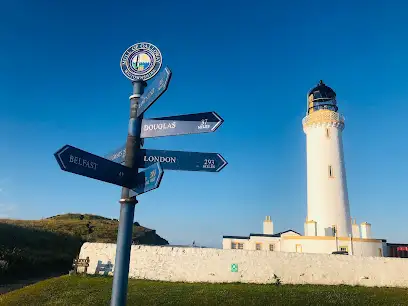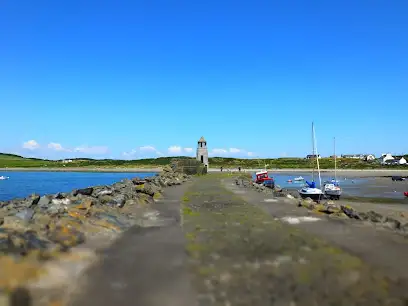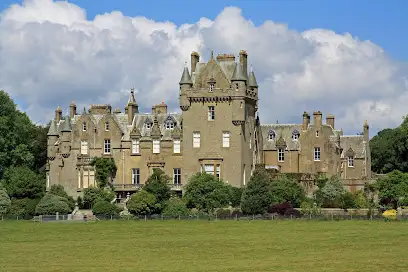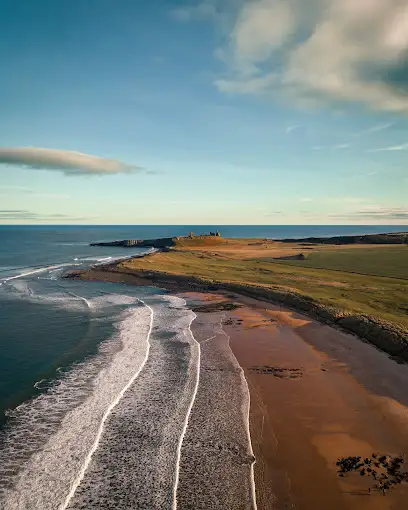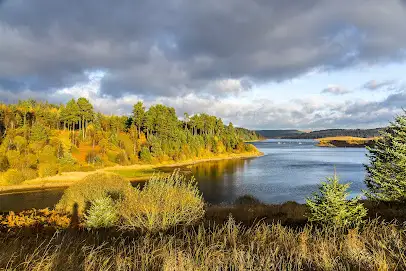Why We Love The South of France
- Mediterranean coastline meets countryside: Experience breathtaking natural landscapes, from lavender fields and vineyards to dramatic coastal cliffs along the sun-drenched Mediterranean coastline.
- Rich history and culture: Discover the fascinating history and culture of the South of France through its medieval towns, Roman ruins in Nîmes, and art-inspired cities.
- World-class cuisine: Indulge in world-renowned cuisine, including mouth-watering bakeries and opportunities for wine tasting along the South of France route, while soaking up the region’s warm, sunny climate.
South of France Itineraries
- Contents
- 1.What is the South of France Road Trip?
- 2.The South of France Road Trip Route
- 3.Stage 1: Toulouse to Carcassonne
- 4.Stage 2: Carcassonne to Narbonne
- 5.Stage 3: Narbonne to Béziers
- 6.Stage 4: Béziers to Montpellier
- 7.Stage 5: Montpellier to Nîmes
- 8.Stage 6: Nîmes to Avignon
- 9.Stage 7: Avignon to Provence
- 10.Stage 8: Provence to Arles
- 11.Stage 9: Arles to Marseille
- 12.Stage 10: Marseille to Toulon
- 13.Stage 11: Toulon to Nice
- 14.Frequently Asked Questions
What is the South of France Road Trip?
The South of France Road Trip is an incredible journey through some of France's most beautiful and culturally rich areas. Starting in Toulouse and ending in Nice, this route is often considered the best road trip itinerary for the South of France. It takes you through diverse landscapes, from the rolling vineyards of the Languedoc wine region to the glamour of French Riviera attractions. Throughout 10 stages, you’ll discover medieval towns in the South of France, charming coastal villages, and breathtaking natural scenery.
The South of France Road Trip Route
- Stage 1: Toulouse to Carcassonne - Start your road trip in Toulouse, affectionately known as “La Ville Rose” (The Pink City), thanks to the terracotta buildings that seem to hug the streets. As you drive through the rolling hills of Occitanie, you can’t help but feel the excitement of what’s to come. Your first destination is the UNESCO-listed medieval town of Carcassonne—a great balance of city and history.
- Stage 2: Carcassonne to Narbonne - From Carcassonne, drive to historic Narbonne, a Roman city with canals and a rich history. Along the way, you’ll see vineyards and other ancient sites.
- Stage 3: Narbonne to Béziers - As you make your way through the Languedoc wine region, you'll end up in Béziers, a beautiful city with Romanesque architecture. This route isn't complete without a visit to the Fonseranes Locks.
- Stage 4: Béziers to Montpellier - Head to Montpellier, a lively university town where medieval history blends with vibrant modern culture. Along the journey, uncover charming towns and remarkable architectural landmarks.
- Stage 5: Montpellier to Nîmes - Drive to Nîmes, a city famous for its well-preserved Roman ruins. For history buffs, this stage is not to be missed.
- Stage 6: Nîmes to Avignon - Enjoy the Provençal countryside on the way to Avignon, where the "City of Popes" offers medieval grandeur, artistic flair, and riverside views impress.
- Stage 7: Avignon to Provence -
- Stage 8: Provence to Arles - In Arles, discover the artistic legacy of Van Gogh and the Roman legacy of the city. Here, you’ll find stories of the past around every corner.
- Stage 9: Arles to Marseille - Continue to Marseille, France’s oldest city. This city is steeped in history and culture, with a diverse mix of different neighbourhoods.
- Stage 10: Marseille to Toulon - Next, follow the Mediterranean coastline to Toulon, a pretty port city famous for its naval history. The lively harbour and relaxed atmosphere make it a great place to unwind.
- Stage 11: Toulon to Nice - Finish your incredible journey in Nice, the capital of the French Riviera. This final stage is the perfect way to end your road trip, from glamorous beaches to historic sites.
 Le Sentier Des Ocres Roussillon
Le Sentier Des Ocres RoussillonStage 1: Toulouse to Carcassonne
Begin your road trip in Toulouse, known as "La Ville Rose" for its pink-hued terracotta buildings. Drive through the rolling hills of Occitanie to the medieval city of Carcassonne, one of the UNESCO World Heritage sites in the South of France.
Top places to visit between Toulouse and Carcassonne:
- Capitole de Toulouse: Stroll through this iconic square in the heart of Toulouse, surrounded by grand Neoclassical architecture and bustling with cafes, markets, and street performers.
- Canal du Midi: A UNESCO World Heritage Site, this tranquil canal offers diverse experiences (cycling, boating, and tree-lined pathways to walk along), making it a top choice for family-friendly activities on a South of France road trip.
- Château de Pennautier: Discover this grand 17th-century estate, offering exquisite wine tastings and guided tours of its elegant interiors and gardens.
- Les Abattoirs Museum: Admire some contemporary art at this museum, which is housed in a renovated slaughterhouse and showcases an eclectic collection of modern works and installations.
- La Cité de Carcassonne: Step back in time at this medieval fortress, with 52 towers, cobbled streets, and captivating views over the surrounding countryside. It’s like stepping back in time.
Stage 2: Carcassonne to Narbonne
From Carcassonne, head to Narbonne, a city steeped in Roman history. Along the way, enjoy vineyard views and ancient landmarks.
Top places to visit between Carcassonne and Narbonne:
- Abbaye de Fontfroide: Wander through this beautiful 12th-century Cistercian abbey, surrounded by gardens and vineyards. Take a stroll or enjoy a wine-tasting experience.
- Les Halles de Narbonne: This bustling indoor market is a foodie’s paradise. It is packed with local cheeses, charcuterie, and freshly baked bread that will make your mouth water. Did you know that all French towns with +1000 inhabitants are required to have a bakery?
- Narbonne Cathedral: Admire the soaring Gothic architecture and stunning stained glass of this unfinished cathedral, a true treasure.
- Canal de la Robine: This picturesque canal is perfect for a leisurely boat ride, a waterside picnic, or a relaxing walk under the plane trees. It offers a moment of tranquillity.
- Palais-Musée des Archevêques: Dive into history at this former palace-turned-museum, which houses a wide-ranging collection of art and archaeological treasures.
Stage 3: Narbonne to Béziers
This stage takes you through the heart of the Languedoc wine region to the charming town of Béziers, known for its Romanesque architecture and stunning views.
Top places to visit between Narbonne and Béziers:
- Étang de Bages-Sigean: A tranquil lagoon teeming with wildlife, including flamingos, set against a backdrop of vineyards and rolling hills.
- Oppidum d’Enserune: Visit this ancient hilltop settlement, offering panoramic views of the Languedoc region and fascinating insights into Roman history.
- Catedral de Saint-Nazaire de Béziers: Perched high above the Orb River, this Gothic cathedral features breathtaking views and an impressive organ inside.
- Pont Vieux: Take in scenic views at this historic stone bridge, connecting Béziers with its surrounding landscapes and offering fantastic photo opportunities.
- Canal du Midi Locks: The Fonseranes Locks are a marvel of engineering and one of the canal’s most visited attractions. Watch boats navigate this intricate system.
Stage 4: Béziers to Montpellier
Next, head to Montpellier, a lively university town where medieval charm meets modern style.
Top places to visit between Béziers and Montpellier:
- Pézenas: Meander through this picturesque town, famous for its artisanal crafts and historic architecture. The bustling Saturday market is filled with local delicacies.
- Montpellier’s Place de la Comédie: The city’s bustling central square, lined with cafes and home to the Opera House and a majestic fountain.
- Musée Fabre: Montpellier’s premier art museum, featuring works from the Renaissance to modern times, housed in a beautifully restored 18th-century building.
- Jardin des Plantes: Enjoy a peaceful walk through one of the oldest botanical gardens in France, among exotic plants and shaded paths.
- Aqueduc de Saint-Clément: This ancient aqueduct, once the city’s main water source, is a scenic walking route with stunning views.
- Catamaran Cruise: Embark on a scenic catamaran cruise in the Frioul Archipelago, enjoying breathtaking views of the Mediterranean and the city skyline.
Stage 5: Montpellier to Nîmes
Drive to Nîmes, a city famed for its remarkably preserved Roman monuments.
Top places to visit between Montpellier and Nîmes:
- Pont du Gard: Explore this famous Roman aqueduct that spans the Gardon River, offering hiking trails and swimming spots nearby.
- Les Jardins de la Fontaine: Beautiful 18th-century gardens featuring fountains and sculptures, perfect for a leisurely walk.
- Arènes de Nîmes: Visit this well-preserved Roman amphitheatre that still hosts concerts and events.
- Maison Carrée: A pristine Roman temple that serves as a marvel of classical architecture, housing a short film that tells the story of the city’s history.
- Tour Magne: A Roman watchtower that offers stunning views of Nîmes and the surrounding countryside after a short climb.
- Food scene: Nîmes has an excellent array of restaurants and culinary delights. Head to La cour des marchands for its exquisite scallop tartare and creamy mushroom risotto. And don’t miss out on the sea bass mousseline at Menna—c’est vraiment divine!
Stage 6: Nîmes to Avignon
Enjoy the Provençal countryside highlights on the way to Avignon, where the "City of Popes" offers medieval grandeur, artistic flair, and riverside views.
Top places to visit between Nîmes and Avignon:
- Château des Baux-de-Provence: Wander through this hilltop fortress, offering stunning views of the Alpilles and a glimpse into medieval Provençal life.
- Pont d’Avignon: The iconic medieval bridge immortalized in song, perfect for a walk and views of the Rhône River.
- Palais des Papes: Tour one of Europe’s largest Gothic palaces. This UNESCO site offers a fascinating dive into Avignon’s history as a papal city.
- Rocher des Doms: A serene park atop a hill, providing sweeping views of Avignon and the Rhône Valley.
- Avignon Les Halles Market: Immerse yourself in this vibrant covered market offering fresh produce, gourmet treats, and an authentic taste of Provençal cuisine.
- Mimi Boulangerie: Stop by this charming bakery, the perfect place to enjoy a freshly baked treat and experience the heart of Provençal culinary culture.
 Arles Amphitheatre
Arles AmphitheatreStage 7: Avignon to Provence
Head to Arles to discover the artistic legacy of Van Gogh’s sunflower fields and the city's Roman heritage.
Top places to visit between Avignon and Arles:
- Camargue Regional Park: This vast wetland is home to wild horses, flamingos, and other unique wildlife. It offers scenic drives and walking trails.
- Arles Amphitheatre: This impressive Roman arena still hosts events and festivals, providing a glimpse into the city’s ancient past.
- Van Gogh Foundation: Dive into the artist’s life and work through captivating exhibitions set in a beautifully restored mansion.
- Saint-Trophime Church: A Romanesque masterpiece with intricate carvings and a peaceful cloister worth exploring.
- Luma Arles: A contemporary arts centre housed in a striking tower designed by Frank Gehry, offering cutting-edge exhibitions and performances.
- Arles’ Sunflower Fields: During his 15-month stay in Arles, Van Gogh painted hundreds of works, including the famous Sunflowers. Drive or join a tour to explore the sunflower fields just outside the city, mainly along the Rhône River. This is undoubtedly one of the top attractions on a South of France road trip.
Stage 8: Provence to Arles
a
Top places to visit between Provence and Arles:
Stage 9: Arles to Marseille
Journey to Marseille, France’s oldest city and a melting pot of cultures.
Top places to visit between Arles and Marseille:
- Les Calanques: Explore this dramatic series of limestone cliffs and turquoise coves, ideal for hiking, swimming, or boat tours.
- Le Panier: Marseille’s oldest neighbourhood, filled with colourful buildings, artisan shops, and a lively atmosphere.
- Domaine de Fontenille: Visit this beautiful estate in the Luberon region, known for its lush vineyards, charming gardens, and exceptional wine. Take a guided tour of the domaine, enjoy wine tastings, and explore the scenic countryside, perfect for a peaceful escape before reaching Marseille city.
- Basilique Notre-Dame de la Garde: Enjoy sweeping views of the city and coastline from this iconic hilltop basilica.
- Mucem: The Museum of European and Mediterranean Civilisations showcases thought-provoking exhibitions in a stunning modern building.
- Old Port of Marseille: This is the bustling heart of the city, perfect for waterfront dining and people-watching. Don’t miss the Quai des Belges, the fresh fish market where vendors set up shop every day.
- Parc National des Calanques: Explore this stunning national park, a coastal paradise offering rugged trails, hidden beaches, and crystal-clear waters. Perfect for hiking, rock climbing, or simply soaking in the breathtaking views of the Mediterranean, all just half an hour’s drive from Marseille itself.
Stage 10: Marseille to Toulon
Drive along the stunning Mediterranean coast to Toulon, a charming port city.
Top places to visit between Marseille and Toulon:
- Walking Tour of Toulon: Explore Toulon’s historic streets and vibrant markets on a guided walking tour that unveils the city’s hidden gems and rich cultural history.
- Cassis: A picturesque fishing village known for its beaches, cliffside vineyards, and relaxed vibe.
- Cap Canaille: Take in breathtaking views from one of Europe’s highest sea cliffs overlooking the Mediterranean.
- Toulon Harbour: Stroll along this bustling waterfront area lined with cafes, shops, and rich naval history.
- Mont Faron: Take a cable car to the summit for panoramic views of Toulon and its sparkling bay.
- Île des Embiez: Escape to this serene island, perfect for nature walks, kayaking, and enjoying pristine beaches.
- Sainte-Baume Natural Regional Park: Hike through this beautiful park, home to rugged hills, dense forests, and the Sainte-Baume cave, where legend has it that Mary Magdalene lived as a hermit. It’s just an 18-minute drive from Toulon.
Stage 11: Toulon to Nice
Finish your incredible journey in Nice. From scenic drives through Provence and the French Riviera to luxurious Mediterranean views, this stage encapsulates the charm of the South.
Top places to visit between Toulon and Nice:
- Nice’s Old Town: Explore the narrow, winding streets that run between old buildings with red-tile roofs. The old town is filled with vibrant markets, quaint cafes, and historic architecture that reveal the city's timeless charm. Don’t miss Bakery Zielinska for its pesto tomato tart and chocolate babka.
- Port Grimaud: Often called the "Venice of Provence," this village is a maze of canals, colourful houses, and charming bridges.
- Promenade des Anglais: A stunning seafront boulevard in Nice, ideal for walking, cycling, or simply soaking up the Riviera atmosphere.
- Matisse Museum: Learn about Henri Matisse’s life and art at this museum, housed in a historic villa surrounded by olive trees.
- Castle Hill (Colline du Château): A must-visit for panoramic views over Nice’s old town, the azure coastline, and the bustling harbour.
- Fondugues Pradugues: Discover this hidden gem, a charming winery nestled in the hills between Toulon and Nice. Enjoy a guided tour through the vineyard, followed by a wine-tasting session of their exceptional local wines, all while taking in the serene Provençal landscape.
- Saint-Tropez: Experience the glitz and glamour of this chic coastal town, famous for its luxury yachts, boutiques, and lively nightlife.
Frequently Asked Questions
The South of France route can be completed in 10 days, dedicating one day to each stage. However, extending the trip to two weeks allows for more leisurely exploration and relaxation.
The best time to explore the South of France route is spring (April to June) or autumn (September to October). These seasons offer mild weather, fewer crowds, and stunning natural landscapes, making them ideal for road trips.
Yes, the South of France route is suitable for caravans, with plenty of well-maintained roads and campsites offering facilities for caravans.
While wild camping is restricted, there are many well-equipped campsites along the route. These campsites offer amenities and scenic locations, making them a great option for budget-conscious travellers.
The route starts in Toulouse and ends in Nice, spanning diverse regions like Languedoc, Provence, and the French Riviera, with countless attractions along the way.
Towns like Cassis, Saint-Tropez, and Nice showcase the beauty of Mediterranean coastal towns while offering vibrant markets, historic charm, and luxury experiences.






